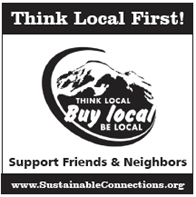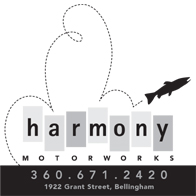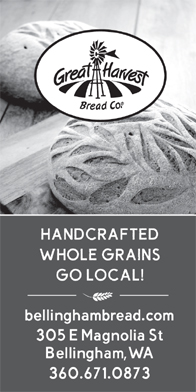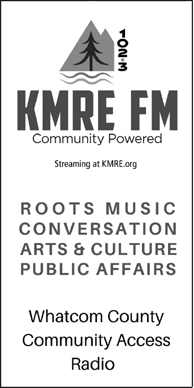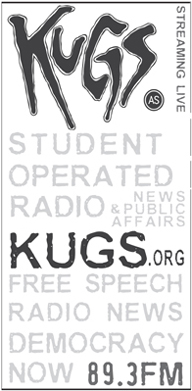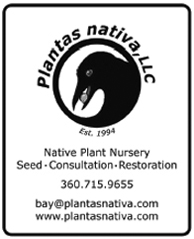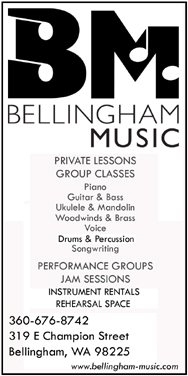by David MacLeod
The future can’t be predicted, but it can be envisioned and lovingly brought into being.
– Donella Meadows, “Thinking in Systems, A Primer”
If we can’t save the places where we live, how are we ever going to save the whales?
– Peter Berg, co-originator of the term “bioregionalism”
For the July 2009 edition of Whatcom Watch, Rick Dubrow and I began a two-part series called “Why Transition, Whatcom?”. We were promoting a new grassroots organization called Transition Whatcom. In the intro, I shared a little bit of the history of my engagement with local environmental organizations, which began in the early 2000s with a small group called Eco-Bell, before eventually becoming a nonprofit under the name Sustainable Bellingham.
I’m back today to introduce a new organization that we are calling (for now) Regenerate Whatcom, (1) which is part of a larger project called Regenerate Cascadia, (2) which partners with the global effort of the Design School for Regenerating Earth. (3)
Regenerate Cascadia is holding this fractal within the Cascadia Bioregion as part of North America (more on this later), while the Design School is helping to grow and develop similar templates and patterns around the world, holding the vision for a Bioregional Earth. (4)
The Design School is a project of complexity researcher and change strategist Joe Brewer and his partner Penny Heiple. In 2019, Transition Whatcom hosted Joe, along with “post-doom” author and public speaker Michael Dowd for a variety of presentations and gatherings. One example of their inspiring presentations can be found on YouTube: “Regenerative Inspiration in Challenging Times.” (5)
Soon thereafter, Brewer moved to Barichara, Colombia, where he began a “living laboratory of regeneration,” putting into practice many of the ideas he had been teaching. Th en in 2021 came his book, “Th e Design Pathway for Regenerating Earth,” (6) which articulated the path and process of earth regeneration, bringing together Joe’s expertise as a complexity researcher with transdisciplinary knowledge and skills that weave together understanding of human behavior, cultural evolution, and dynamic earth systems, with a frank awareness of current conditions. Next, the Design School for Regenerating Earth was born.
Activation Tour
In 2023, Victoria artist Clare Atwell and Seattle organizer Brandon Letsinger formed Regenerate Cascadia, with the initial action of teaming with Brewer’s Design School for an “Activation Tour.” They brought Joe and his team on a month-long journey to visit 14 different communities from Oregon to British Columbia, and ask the question, “How do we regenerate the Cascadia Bioregion?” One of their stops, of course, was here in the Nooksack River watershed, where their visit was organized by David Ketter, Brian Kerkvliet, and me. The presentation at Bellingham Unitarian Fellowship can be viewed online. (7)
After the Activation Tour, an online summit was held, where Cascadians convened together and shared knowledge. And then began the slow work of building the Regenerate Cascadia organization of hubs, guilds, projects, and Bioregional Learning Centers, with the mission to “create the conditions for a regenerative culture to thrive.”
Since organizing the portion of the tour that came through Bellingham and Whatcom County, Ketter, Kerkvliet, and I have been holding the container for what wants to emerge as Regenerate Whatcom. We’ve held a few meetings, and some in-person gatherings at Inspiration Farm, and, along with a number of other locals, have participated in the online learning journeys offered by the Design School.
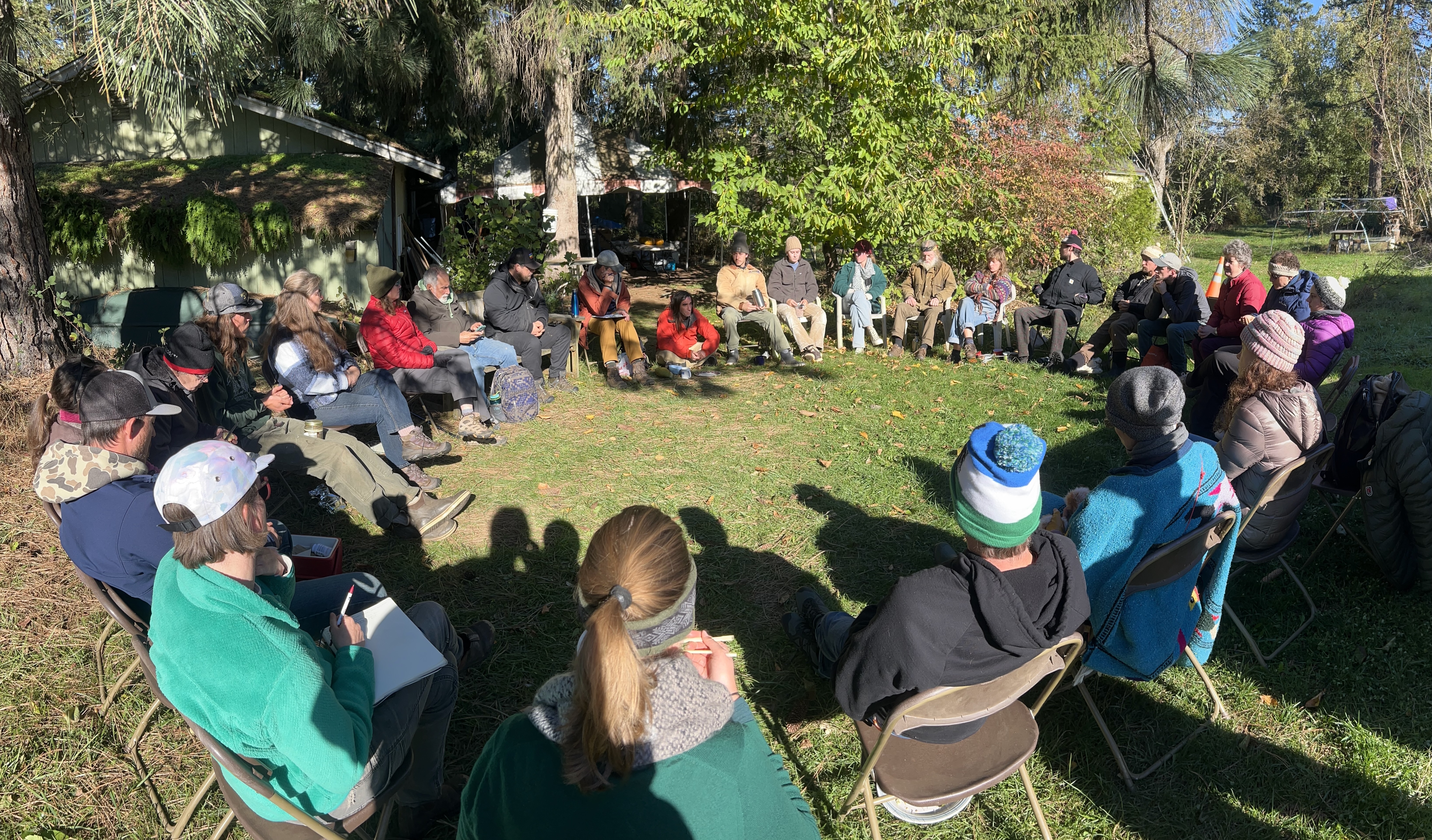
photo: Brian Kerkvliet
A gathering at Inspiration Farm, as part of the 2023 Regenerate Cascadia Activation Tour.
We now feel it is time for our next steps in moving forward our local Regenerate Whatcom group itself.
But let’s back up. We have some questions to answer: What’s the problem we’re trying to deal with, and is it a problem — or a predicament? After all, a problem tends to make us want to fi nd a solution to fix it, whereas a predicament implies a complex situation that requires responses to mitigate and manage, but does not “solve” the predicament. (8) What’s “Earth Regeneration”? What’s “bioregionalism”?
The Predicament — Planetary Boundaries
Consider this. In his book, Brewer opens right off the bat saying, “This is a book about what needs to happen if humanity is to intentionally avoid extinction.” The first two chapters deal with the notion of planetary collapse and references the work of thinkers such as William Catton (“Overshoot”), Donella Meadows (“The Limits to Growth”), and Joseph Taintor (“The Collapse of Complex Societies”).
Brewer makes the case that the self-regulating process of the Earth has been destabilized, and that its carrying capacity has already been overshot. If we are to develop a “design pathway to regenerate Earth,” we will need to
a) identify steps,
b) outline obstacles,
c) progress through the steps as we resolve obstacles, until
d) our goals are achieved.
We need to orient around an identified “North Star” that will make both the obstacles and the opportunities more comprehensible and graspable. Brewer offers the Planetary Boundaries’ framework developed by the Stockholm Resilience Centre as our North Star, because it can be visualized as a doughnut of concentric circles showing the boundaries of a safe operating space for the stability of Earth systems in nine identified categories. Tipping points are identified, where, if they are exceeded, the life support of the planet is put at risk. (9)
In a conversation with Nate Hagens on The Great Simplification podcast, Johan Rockström, who leads the Stockholm Resilience Center, put the nine boundaries into three buckets. First are the global boundaries, which include climate change, ocean acidifi cation, and stratospheric ozone depletion. Second are the biospheric, or “nature” boundaries, which are biodiversity, the hydrological cycle (fresh water), land-system change (rainforests, etc.), and nutrient cycles (especially nitrogen and phosphorous). The third category is what Rockström refers to as “the aliens”: these are not natural systems or earth elements, but are from human sources, and include “novel entities” (nuclear waste, microplastics, endocrine disrupters), and aerosol loading (air pollution). (10)
When Brewer’s book was published in 2021, there was strong evidence that four of the nine boundaries identified had already been crossed, which means outside of the safe space. When the latest peer reviewed report was published in 2023, they now believed that six of nine boundaries had been crossed.
The six boundaries crossed are climate change, biodiversity, land-system change, nutrient cycles, the hydrological cycle, and novel entities. As Rockström stressed in his conversation with Nate Hagens, ”We need to come back into the safe space on planetary boundaries, even if we care only about solving the climate crisis, and it won’t be enough to just phase out coal, oil, and gas.”
So now we have our North Star, an objective to do the work necessary to get all nine boundary dynamics back within the safe operating space on the innermost circle. As Brewer puts it, “This framework is like a destination toward which we can direct the ship of our hearts and minds, so that we might arrive at the soul of Earth regeneration.”
Earth Regeneration
What does “Earth regeneration” mean? Is this just the latest buzzword? We should see this not as a new catchline, but rather as a slight shift in focus that has scientific rigor.
Here is how Joe Brewer describes it. Regeneration is what living systems do as they work to balance and integrate the dynamic patterns in their environment in order to maintain coherence and to thrive. It is also a concept we can use to guide our efforts to achieve sustainable outcomes in our environmental practices.
Regeneration for the Earth is about restoring and maintaining planetary health as we integrate our actions — scaling up local efforts and connecting to global efforts across all systems with a shared sensibility of what is needed to sustain the entire planet.
This work of Earth regeneration includes addressing cultural evolution, and the principles for creating regenerative economies. Rather than accepting our current economic structures as just the way things are, we need to re-imagine these constructs and incorporate what we know about other domains such as energy and ecology, and seek to integrate them to develop truly regenerative economies.
Of high importance is the need to work on regeneration at territorial scales. There are regenerative projects happening across the globe, but Brewer points out that what is lacking is the capacity to achieve regeneration at whole-system scales. At the level of functional landscapes, we can see the structured ecological flows that are organized around rivers, mountains, and coastal estuaries. These structured ecological flows are dynamic patterns that create and maintain conditions for entire ecosystems to thrive.
“We must organize our efforts around the functional landscapes of real-world ecosystems to achieve the emergent capacities of sustainability at territorial scales,” as Brewer states.
And this brings us to …
Bioregionalism
A bioregion is a geographical terrain that is the ecological scale that a life system has adapted to in terms of its attributes. Human settlements in bio-cultural regions have given rise to ideas on how best to live in these places.
Bioregionalism, according to the Regenerate Cascadia website, means living indigenous to place, based around watersheds rather than arbitrary lines on a map.
In a recent Facebook post, Joe Brewer emphasized the long history of this way of living: “It is very important to name that bioregionalism is a relatively new word for a very old way of being. All sustainable Indigenous cultures throughout human history have been organized in harmony with their local ecology … The long history of bioregionalism is that biological species co-evolve with their living landscapes … Living bioregionally is the future for humanity if we don’t go extinct …”
What is envisioned is a network of regenerative bioregions. The basic idea is to weave together regenerative economies built around functional landscapes that are being restored to safe levels of the planetary boundaries in order to safeguard humanity’s future — “moving toward the North Star of planetary health,” as Brewer puts it.
The term bioregionalism was coined by Peter Berg and Raymond Dasmann. Berg attended the first United Nations Conference on the Human Environment held in Stockholm, Sweden, in 1972. As Berg described the occasion, 10,000 “planetariats” showed up wanting to identify with the planetary biosphere, but they weren’t allowed into any of the meetings which were attended by representatives of nation-states. This inspired Berg and his cohorts to begin thinking differently — “to think of our place and where we live in ecological terms, and that we were really citizens of that ecological place. That’s where the idea of a bioregion came from.”
Berg then formed Planet Drum as an ecological education group that sought ways to harmonize human society with the natural processes of the planet.
The Cascadia Bioregion
We live in the Cascadia bioregion. Sometimes defined as including the Cascade Mountains of Oregon, Washington, and British Columbia, but a recent article by Clare Attwell, Brandon Letsinger, and Taya Seidler defines it more broadly: “Stretching over 2,500 kilometers along the Pacific Rim of North America, from Southeast Alaska to Northern California, and as far east as the Yellowstone Caldera, the Cascadia bioregion represents more than a geographical region; it’s an area that shapes a distinct culture, ecology, and sense of place.” (11)
Indigenous people have lived here sustainably for tens of thousands of years, organized around salmon runs, following the rivers from the mountains like Koma Kulshan down to the Salish Sea. As Brewer notes, “When we recognize that the subsistence systems of human tribal networks were all organized as bioregions, it becomes clear that this is the appropriate scale for regenerative cultures.” (6) We can acknowledge and learn from the Lummi, Nooksack, and other Coast Salish peoples who have long been stewards of this unceded territory we all now inhabit. Readers are encouraged to check out the People of the Salish Sea curriculum available through the Whatcom County Public Library system. (12)
According to Brandon Letsinger, “‘Cascadia’ was first applied to the whole geologic region by Bates McKee in his 1972 geology textbook ‘Cascadia: The Geologic Evolution of the Pacific Northwest.’ Later the name was adopted by David McCloskey, a Seattle University sociology professor, to describe it as a bioregion. McCloskey describes Cascadia as ‘a land of falling waters.’” (13) McCloskey saw this as a way to describe our regional identity, and it was adopted by hundreds of early organizers who came together for what became the Cascadian Bioregional Congresses. Brandon has done much to document and honor these forbearers who have paved the way for the bioregional movement now being revived again.
Regenerate Cascadia
Regenerate Cascadia is a 501(c)3 nonprofit that is organizing and helping to fund different local landscape hubs. The mission is “to regenerate the Cascadia bioregion and to create the conditions for a regenerative culture and movement to thrive.” Goals include regeneration of our bioregion, our borders, our culture, our economies, our governance, and our learning.
Regenerate Whatcom
Regenerate Whatcom is a working title, which may eventually change to more directly reference our watersheds rather than arbitrary governance borders. Regenerate Nooksack and Skagit, perhaps? We currently have four core team members (Brian Kerkvliet, Cory Sevin, David Ketter, and I), and we’re working to attain “Landscape Hub” status within the Regenerate Cascadia framework.
Potential actions and activities for our group:
- To promote empowered participation: we want to build bridges of mutual integration and functional interdependency from one bioregion to the next, from one organization to the next, and from one neighbor to the next as we collectively navigate the chaotic transition currently underway.
- To encourage prosocial behavior: to achieve the audacious goals being undertaken, “improvements in our cooperative abilities are required.”
- To create a “story of place” and undertake bioregional mapping: bioregional mapping is a community and participatory process to create maps that combine ecological and physical information with social and cultural information within a given place.
- To engage integrated landscape management: co-creating a bioregional regeneration strategy that reflects the unique needs and gifts of our watersheds and communities.
- To develop a bioregional learning center: supporting the necessary training and learning in many domains required for regenerative work.
- To teach the principles for regenerative economics: utilizing alternative frameworks from ecological economics and biophysical economics to evolve our understanding and engagement with this important discipline that must integrate energy, ecology, and economics into a healthy and holistic approach.
- To support and promote collaborative projects: regeneration projects that heal our soils, waters, and communities. Local individuals and other organizations need our support and can be exemplars that inspire others, with multiplying effects.
- To activate Flow Funding: directing resources toward high-impact community-led solutions.
As stated at the start above, we now feel it is time for our next steps in moving forward our local Regenerate Whatcom group itself. We hope you’ll join us on this important endeavor — in the ways that are right for you. Find us online (1) or reach out to me, davado.macleod@gmail.com.
Resilience
There is so much need for mutual aid right now. Resilience is a project that begins at home — in our own communities and local landscapes. It is also something that requires us to enter into and remain in direct relationship with the reality of what is happening around us.
The old world is dying. A new one is trying to be born. Nations, international institutions, the globalized economy — they are all built on colonization and extraction. Regenerative economies emerge through bioregional organizing. Coming into right relationship with the living world of which we are only a part.
– Joe Brewer Facebook post, April 30, 2025
__________________________________
David MacLeod is a lifetime resident of Bellingham, and is a “social permaculturalist” seeking to integrate energy, ecology, and economics. David serves on the board for Sustainable Bellingham, is editor for the Transition Whatcom newsletter, and sometimes writes on Substack: https://daviddmacleod.substack.com/.
References
- https://regeneratecascadia.org/regenerate-whatcom/
- https://regeneratecascadia.org/
- https://design-school-for-regenerating-earth.mn.co/
- https://www.bioregionalearth.org/
- https://www.youtube.com/watch?v=tmwFJ3-5OrE
- https://www.bioregionalearth.org/pathway/design-pathway
- https://www.youtube.com/live/vfDKmFezYg8
- https://thearchdruidreport-archive.200605.xyz/2006/08/problems-and-predicaments.html
- https://www.stockholmresilience.org/research/planetaryboundaries.html
- https://youtu.be/JaboF3vAsZs
- https://www.bioregionalearth.org/blog/regenerate-cascadia
- https://www.wcls.org/people-of-the-salish-sea/
- https://cascadiabioregion.org/cascadia-the-name


